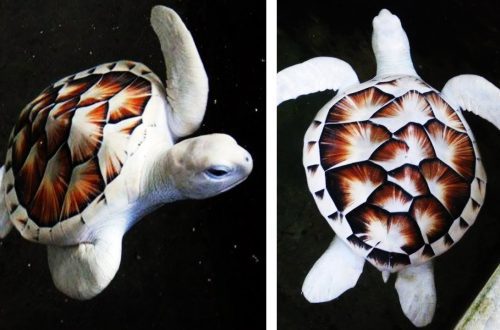
What do moles eat, are they pests for the garden and why?
The mole is the hero of many favorite cartoons, a funny fluffy creature that is very common in the summer cottage. They are said to be terrible pests for garden crops, and a lot of ways are invented to fight moles.
Are such claims substantiated and on what are they based? What does this underground animal actually eat?
Contents
Little fluffy “digger”
Moles – These are predatory mammals leading an underground lifestyle. The size of an individual is mainly in the range of 5–20 cm with a weight of up to 170 grams. He has very valuable fur, so you can find fur coats made from mole skins. The value of mole fur is in its special plush texture – its pile grows straight, and the animal can move in any direction without problems. Only having sensed the danger, the mole immediately hides in a mink, using the reverse gear for this. Yes, and in everyday life, he very often moves back, getting into the right “rooms”.
Blind but not flawed
Almost blind the animal has a strong sense of smellwhich compensates for the lack of vision. Powerful paws with huge claws work to make moves in the ground, a cylindrical body and a narrow muzzle also help with this.
The front and hind legs of the animal are very different, and if the powerful front legs resemble shovels with large claws flattened at the ends, then the hind legs are very poorly developed. The head is small and elongated, with a completely inconspicuous neck. The protruding nose is very sensitive, since the worm’s eyes are practically non-functional, and he perceives this world through the sense of smell. There are no auricles, but the animal hears loud sounds well. And the eyes and ears are covered with body foldsso that when earthworks are done, they do not become clogged with earth. In fact, for this reason, they are not visible and it seems that this animal simply does not have them. Although there are such eyeless individuals.
Moles are really blind, because their eyes do not have a lens and retina, and tiny eye openings are closed by a moving eyelid, or even completely overgrown. How do they survive with such a meager arsenal of sense organs? Few people have a sense of smell and touch as developed as our hero. A person will not yet have time to see the prey with his eyes, but the mole will already find it with the help of smell. He smells a bug or a worm at a great distance just by the smell they give off.
Moles do not migrate through all fields looking for food. Finding a good place to live, they equip stationary housing with rooms for rest, food supplies, many passages and hunting haciendas. The hole itself is most often located under a tree or a large bush very deep in the ground. The bedroom is comfortably lined with leaves and dried grass, surrounded by many closets.. There are two types of passages, feed and running, the first are superficial (3-5 cm), which moles use to collect food, and the second are deeper (10-20 cm).
Herbivore or carnivore?
The whole structure of the underground “digger” indicates that he does not hunt your carrots, but earthen living creatures. In the imagination of people, this furry baby is only looking for opportunities to feast on the roots of their garden plants. But this is just a myth, because the mole is not a vegetarian and eats plant foods infrequently. Rare cases of mole eating plants are required only to make up for the lack of certain elements, that is, for prevention.
Let’s take scientific facts, which say that scientists never find plant particles in mole remains, only all kinds of worms and bugs. The animal loves to feast on insects that live underground, they make up the bulk of its diet. And in the land for a little miner, a real buffet is laid:
- earthworms;
- beetles;
- Larvae;
- Slip away;
- Medvedki;
- Other insects and invertebrates.
The diet, as you can see, is very rich in protein and other nutrients. Moles eat their own weight of food per day. The mole’s favorite delicacy is earthworms, which it carefully cleans before being consumed. He squeezes the earth out of their body, clamping between two paws. These same worms go to winter food supplies.
An interesting fact is the paralyzing property of mole saliva, which immobilizes the victim. This is very convenient in terms of creating supplies – the victim is alive and does not deteriorate, but does not run away.
The mole, like many small animals, must often eat, namely every 4 hours, in just 10-12 hours without food, and he can die. In addition to food, they need regular water intake.. Usually one of the passages leads to a source of water – a river or a pond. And if there is no such source nearby, then the mole adapts specially dug pits-wells for this. Often, for this reason, a wormhole can be flooded with water, but they not only dig well, but also swim.
Pest or helper?
There is simply no single answer to this question:
- First, all living beings are important and necessary. One need only recall the catastrophes that happened after the extermination of the “field pest” of the sparrow in China or the imbalance with wolves and rabbits in Australia;
- secondly, the mole does not intentionally harm your plants, but breaking through passages, it can cause great damage to the roots. It is even useful in that it eats the larvae of garden pests, as well as bears and slugs. But he also eats the earthworm, which is very valuable to the farmer. Here, as they say, a double-edged sword, but there is no intentional harm to plants from this “digger”;
- thirdly, it breaks the ground on a grandiose scale, loosening and aerating it better than any special equipment.
Both in free land and in your garden, he can dig up to 20 meters of new moves. One can only imagine what it could lead to.
As you can see, the mole, strange as it sounds, is both harmful and beneficial for agriculture. One thing is clear that the extermination of this species will entail another biological imbalance. In Germany, for example, moles are protected. Nevertheless, we sell many repellers and traps that help in the fight against these animals.
Often a completely different animal is mistaken for a mole – a mole rat. It is he who is engaged in the theft of the crop, and not at all our hero.
A pet with a bad temper
This plush animal has a bad character – absurd and irreconcilable. The mole is a bloodthirsty, implacable and aggressive creature., he can even eat a small mouse that accidentally got into his home. He does not tolerate neighbors, he will not eat another mole, but he will meet him extremely unfriendly. Moles converge in a pair only during the breeding season. By the way, they multiply quite quickly.
Yes, and he does not have time for friendship, because all the time the mole is busy with his own food. Spending an enormous amount of energy on digging passages, he is forced to eat from 70 to 100% of his weight. The whole life of the mole passes underground, he, as they say, “does not see the white light.” Although there are among the representatives of this species those that go outside or lead a completely terrestrial lifestyle.
Some even have a mole as a pet, however, moles are not very loving. The main thing is to properly feed the domestic mole, since plant foods are not suitable for him. If you have already caught this beast and decided to settle it at home, then be prepared now to catch grasshoppers and dig worms, without which it cannot live.
Who hunts the mole
Despite the fact that the mole practically does not leave his large-scale underground possessions and he has ill-wishers. Occasionally the animal still crawls to the surface to catch a toad or lizard, which they are not averse to eating, and on other matters. Foxes and raccoon dogs love to hunt down moles. Sensing it nearby, they quickly dig out the mole hole and catch the mole. But because of the unpleasant smell, they do not eat it, but the animal most often dies. Also, weasels can hunt moles.
Also, moles can be exterminated for the sake of skins, but this is more dependent on fashion trends, because mole skin is not mink, which is always popular.





